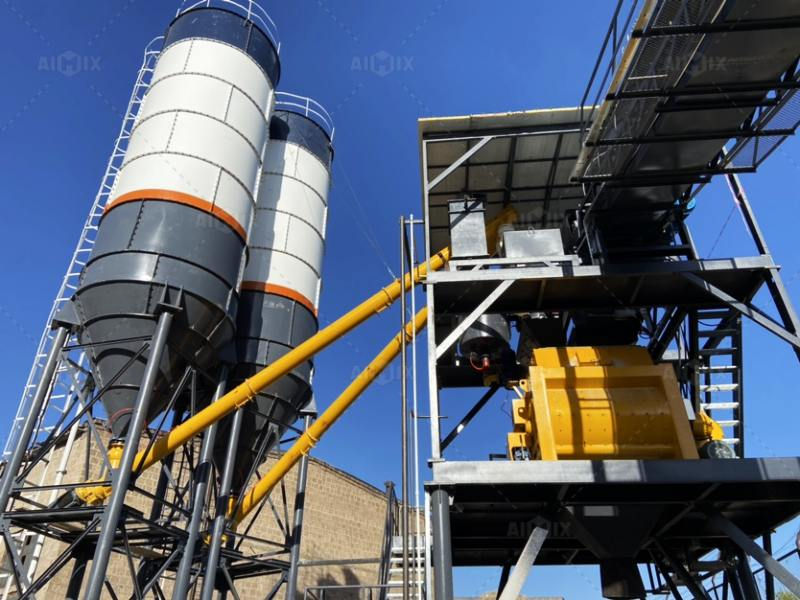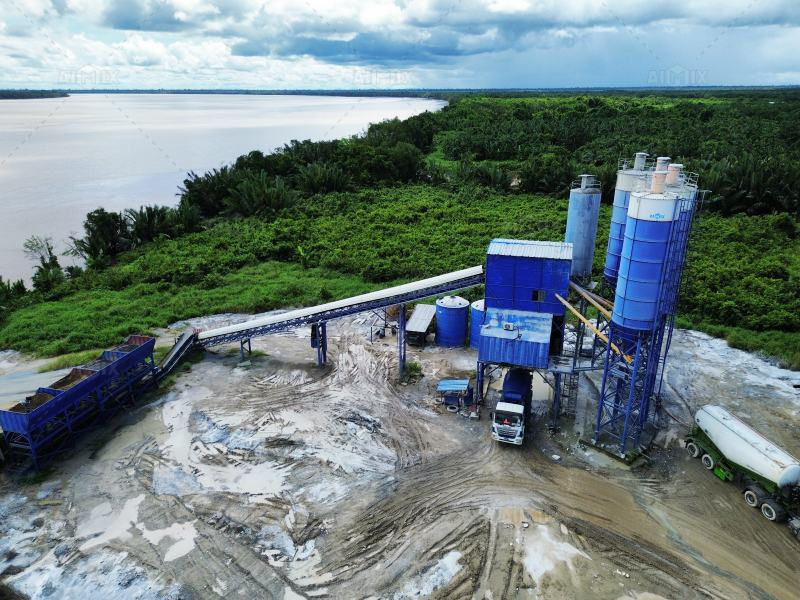RMC Plant Cost vs. Operational Efficiency: Which Matters More?
- aimixglobal5
- Mar 27
- 3 min read
When investing in a Ready-Mix Concrete (RMC) plant, businesses must balance two key factors: cost and operational efficiency. While the initial cost of setting up an RMC plant is a crucial consideration, long-term operational efficiency often determines the profitability and sustainability of the business. Making the right choice between cost savings and efficiency can directly impact the success of an RMC plant business.
In this article, we will analyze the relationship between RMC plant cost and operational efficiency, highlighting their respective roles in business growth. Additionally, we will discuss how selecting the right concrete batching mixing plant can help achieve the perfect balance between affordability and performance.

Understanding RMC Plant Cost
The cost of an RMC plant depends on various factors, including:
Plant Capacity: Higher capacity plants cost more but provide increased production efficiency.
Automation Level: Fully automated plants are more expensive but reduce labor costs and enhance precision.
Equipment Quality: Premium machinery lasts longer and requires less maintenance, but comes at a higher price.
Installation & Setup Costs: These include transportation, foundation work, and commissioning expenses.
Operational Costs: Running an RMC plant involves expenses such as labor, electricity, raw materials, and maintenance.
Reducing initial investment costs is a priority for many businesses, but cutting corners on critical components can lead to inefficiencies, higher maintenance costs, and reduced profitability over time.
Importance of Operational Efficiency in RMC Plants
While cost is an essential factor, operational efficiency plays a crucial role in determining the overall profitability of an RMC plant business. A highly efficient concrete batching mixing plant can enhance productivity, reduce waste, and improve the quality of concrete production. Key elements that influence operational efficiency include:
Consistent Concrete Quality: Advanced batching plants ensure uniform mix proportions, reducing material wastage and improving project outcomes.
Automation & Control Systems: Smart technology helps monitor processes, adjust batching parameters, and minimize human error.
Energy Efficiency: Optimized power consumption reduces electricity costs, contributing to lower operational expenses.
Minimized Downtime: High-quality plants with durable components require fewer repairs and replacements, ensuring smooth operations.
Speed & Production Output: Faster batching and mixing processes improve delivery times, meeting project deadlines more efficiently.
A well-maintained and properly operated plant ensures long-term savings, making efficiency just as crucial—if not more—than the initial cost of the plant.

RMC Plant Cost vs. Operational Efficiency: Which Should You Prioritize?
1. Short-Term vs. Long-Term Business Goals
If your primary concern is reducing upfront investment, a basic RMC plant may seem like an attractive option. However, lower-cost plants often lack essential automation and quality control features, leading to inefficiencies in the long run.
If your goal is long-term profitability and business growth, investing in a high-efficiency concrete batching mixing plant will offer better returns through higher productivity and reduced operational costs.
2. Impact on Production Output and Profit Margins
A low-cost plant may have a limited production capacity, restricting your ability to meet large project demands. This can result in lost contracts and reduced business opportunities.
An efficient plant enables higher production volumes, improving order fulfillment rates and increasing profit margins.
3. Maintenance and Repair Costs
Cheaper RMC plants often require frequent repairs and higher maintenance costs, leading to unexpected downtimes.
High-quality, efficient plants come with better warranties and lower maintenance needs, reducing long-term expenses.
4. Competitive Advantage in the Market
A business with an efficient concrete batching mixing plant can offer consistent product quality, building a strong reputation in the construction industry.
Delays and inconsistencies caused by inefficient plants can lead to client dissatisfaction and loss of contracts.
Finding the Right Balance Between Cost and Efficiency
To ensure business success, finding the right balance between RMC plant cost and operational efficiency is key. Here’s how you can achieve this balance:
Invest in Scalable Solutions: Choose an RMC plant with the option for future upgrades, allowing your business to scale operations without a complete overhaul.
Compare Manufacturers & Suppliers: Partner with reputable manufacturers that offer high-efficiency plants at competitive prices.
Look for Financing & Discounts: Many suppliers offer installment plans, leasing options, or discounts on a concrete batching mixing plant purchase.
Prioritize Energy Efficiency: Selecting a plant with energy-saving features can significantly lower electricity costs over time.
Implement Preventive Maintenance: Regular servicing and equipment checks prevent costly breakdowns and enhance efficiency.

Conclusion
While RMC plant cost is a crucial factor when starting or expanding an RMC plant business, prioritizing operational efficiency ensures long-term profitability and sustainability. Investing in a high-efficiency concrete batching mixing plant reduces downtime, improves concrete quality, and enhances production capacity, giving businesses a competitive edge in the market.
Ultimately, the best approach is to find a balance—choosing a cost-effective plant that does not compromise on essential efficiency-enhancing features. This strategic investment will not only optimize business operations but also drive long-term success in the construction industry.







Comments